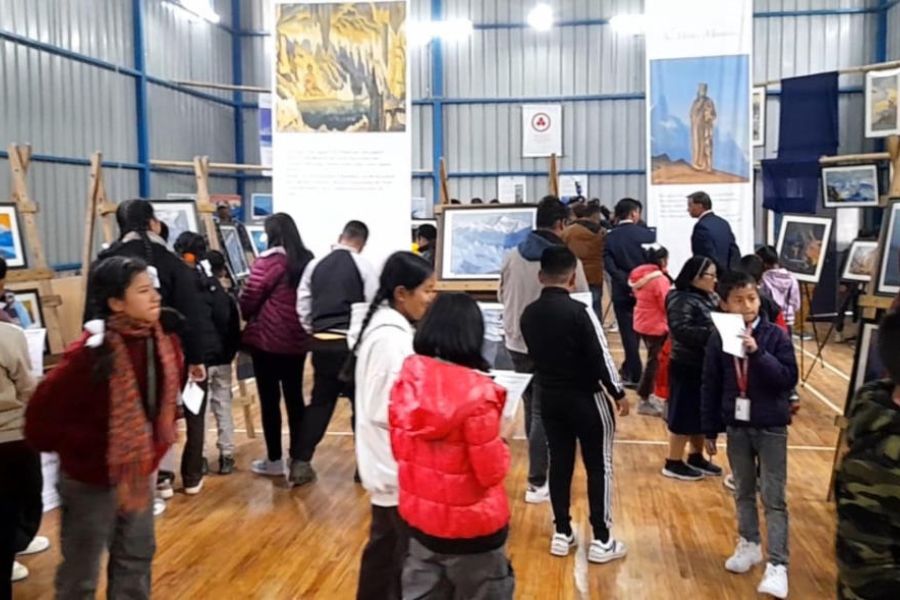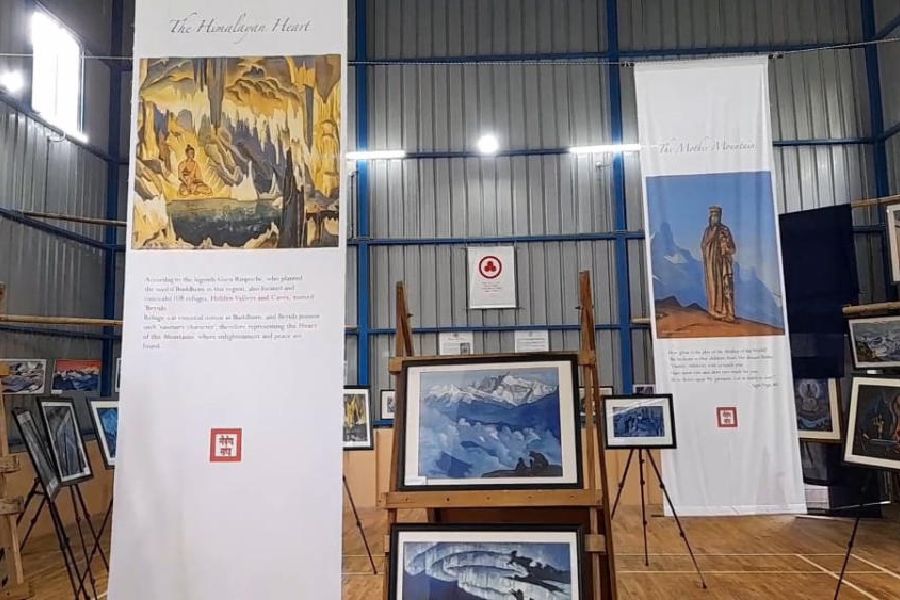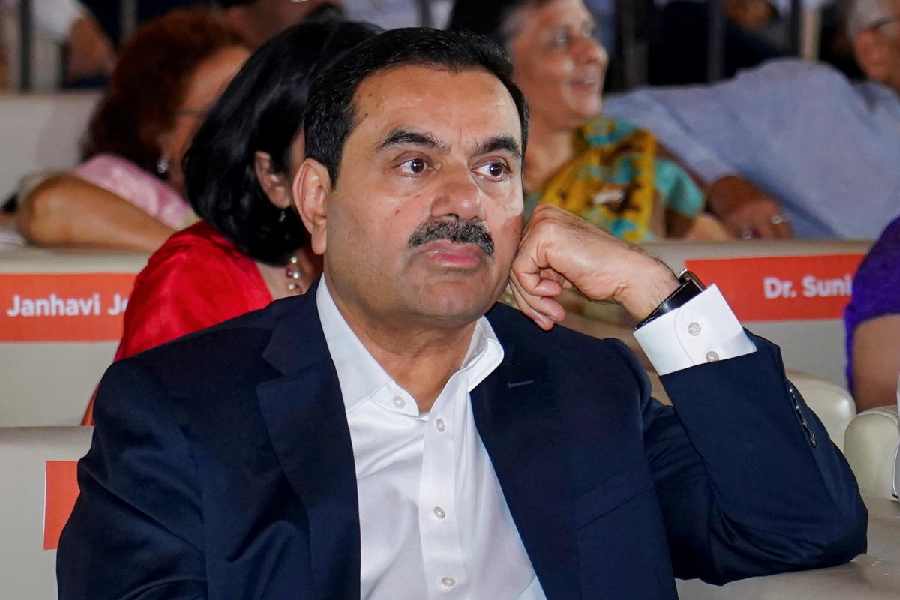The wispy hills of Darjeeling on Thursday celebrated famed Russian painter Nicholas Roerich’s 100-year-old connection with Darjeeling and the Himalayas at a time when manmade disasters are striking the Himalayan belt with alarming frequency.
Roerich, a painter, writer, archaeologist, theosophist and philosopher, was acclaimed as the “master of the mountains”, with Rabindranath Tagore considering him a voice for “what every sensitive mind feels about the greats of all arts, the Art of Living” and Jawaharlal Nehru hailing him as "a creative genius".
The painter, almost a century after he discovered his love for the Himalayas, has once again forced the discerning to ask if the mountains are being listened to.

Visitors at the exhibition organised by the HMI in Darjeeling on Thursday
Roerich lived in Darjeeling between 1923 and 1925 and again in 1928 before breathing his last at Kulu in Himachal Pradesh in 1947.
During his time in the Himalayas, he came up with hundreds of works related to these mountains.
"The last of his paintings, we might not even consider it to be the best, was sold at USD 5 million,” said Fiorenza Bortolotti, an architect and curator of the Roerich Museum at Crookety House in Kalimpong.
"If Roerich were to visit the (Himalayan) region now, he would find it totally different,” said Bortolotti, who comes from Italy and has spent years in the Alps.
Bortolotti was speaking at an event organized by The Himalayan Institute of Goodwill and Living Ethics, a trust, along with Darjeeling Goodwill Centre, an NGO and Himalayan Mountaineering Institute (HMI) to celebrate the “100 years of Roerich in Darjeeling”. The three-day event started on Thursday.
The exhibition is titled: “Messages from the Great Mountain- see with the eyes of the heart.”
"The children from Gandhi Ashram orchestra sang 'the mountains are calling, are we listening' to spark the conversation at the event,” said Bortolotti.
The organisers put up five sections — messengers, the heart of the mountains, mother mountain, Everest-Chomolunga-Sagarmatha, Roerich pact and banner of peace.
After Roerich's death, his wife Helena lived on at the Crookety House, a British cottage built in the 1930s by Norman Odling, the son-in-law of Dr Graham, the founder of the famous Dr Graham’s Homes in Kalimpong.
"We have around 40 reprints, some of which were brought from Russia, of Nicholas Roerich and around four reprints of his son Svetoslav. We wanted the visitors to look into the difference in painting style between the father and son,” said Bortolotti.
Svetolslav, the younger son of Roerich, had married the famous Indian actress of yore, Devika Rani.
Around 20-odd paintings from artists of Darjeeling region have also been exhibited.
The organisers want the world to come and see the paintings not with the “physical eyes” but also to imagine through their hearts, what “messages that Nicholas Roerich was giving life and shape through his unique Himalayan paintings.”
"And what are the urgent messages that we are able to listen and witness today, 100 years later? This is the question,” said the architect.
A spate of disasters in recent times has raised questions on whether the fragile mountain ecosystem is being treated right.
A glacier lake outburst flood (GLOF) washed out one of the biggest hydel projects in the Himalayas at Chungthang in north Sikkim on October 4, killing 46 people. Many more are still missing in the mountain flood.
Forty-one tunnel diggers working at the Silkyara-Barkot tunnel on the Yamunotri National Highway in Uttarakhand were trapped for 17 days from November 12 in a Himalayan tunnel collapse. They were rescued only on Tuesday.
Ten persons have died digging the Rs 4,000 crore Sevoke-Rangpo (Bengal-Sikkim railway link) project so far. Two geographic fault lines are located in the region where the rail link is being currently laid.
The exhibition organisers put up forms for children to answer a questionnaire after visiting the exhibition.
One of the answers by a student to the question — what message do you receive today from the mountains and want to pass on — touched the heart. The answer: “Listen to the mountains.”











